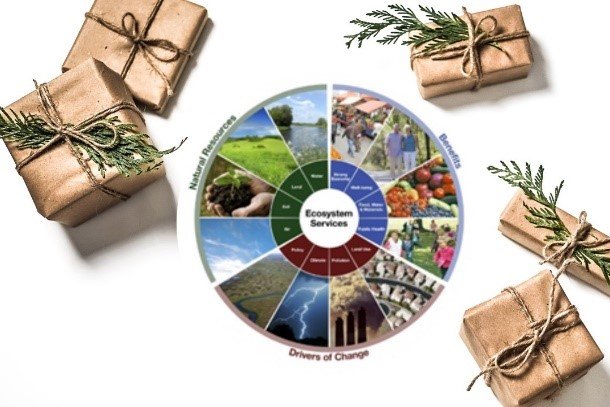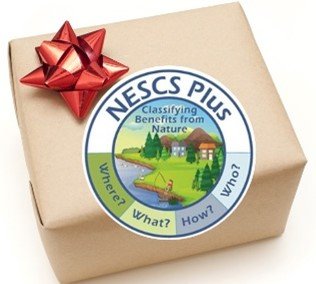Nature’s Gifts – Ecosystem Goods and Services

Published December 13, 2022
As you and your family and friends settle in for the winter holidays, it is a great time to consider all the gifts we get from nature and the environment and how they keep us healthy and happy. Ecologists use the term “ecosystem goods and services” to define these gifts we receive, usually without charge.
Ecosystem produce the many life-sustaining benefits we receive from nature—clean air and water, fertile soil for crop production, pollination, and flood control – just to name a few. These ecosystem goods and services are critical to environmental and human health and well-being.
Understanding these benefits, or gifts, from nature helps EPA researchers as they develop new approaches to help communities improve environmental resiliency, sustainability, and public health. Read about a few of the resources and tools EPA researchers have developed to help people better understand, appreciate, and sustain these gifts below.
The EnviroAtlas provides geospatial data, easy-to-use tools, and other resources related to ecosystem services, their chemical and non-chemical stressors, and links to human health. It includes an Interactive Map for easy data access and an Eco-Health Relationship Browser to explore the published links between ecosystem services and human health. The EnviroAtlas is robust and easy to use for anyone with a curiosity about the environment.

The National Ecosystem Services Classification System (NESCS) Plus serves as an organizing framework for identifying specific ecosystem services – in a given environment – that are relevant to specific people or groups. This can be important for efforts to analyze how changes to ecosystems affect human welfare. To measure these types of effects (positive and negative), EPA created the Final Ecosystem Goods and Services Metrics Report to quantify how these changes to ecosystems directly affect people.
The EcoService Models Library (ESML) is an online database for finding, examining, and comparing ecological models that may be useful for quantifying ecosystem goods and services.
The Final Ecosystem Goods and Services Scoping Tool provides a structured, transparent, and repeatable process for identifying and prioritizing stakeholders, the ways those stakeholders benefit from the environment, and the aspects of the environment necessary to realize those benefits. Final Ecosystem Goods and Services (FEGS) are a way of including and measuring the benefits provided by natural ecosystems into research and decision-making.
A recently released report applies this tool to a case study in Tillamook, Oregon. That project’s goal was to inform the Tillamook Estuaries Partnership restoration managers about the priority ecosystem services and environmental attributes of 15 stakeholder groups regarding proposed restoration of select wetlands in the Tillamook River basin.
A second report, “Incorporating Ecosystem Services Into Restoration Effectiveness Monitoring & Assessment: Frameworks, Tools, and Examples,” demonstrates that incorporating ecosystem services in restoration effectiveness monitoring and assessment is feasible, practical, and provides strategic value that can enhance the success of restoration projects. Inclusion of ecosystem services in restoration project goals and restoration effectiveness assessments can improve external support for the project by linking the outcome of restoration to those benefits that stakeholders (including nearby communities) care about.

If you’re looking for something a little more fun, there’s the Nature’s Benefit Card Game. Players explore how people benefit from nature, how our actions impact the benefits we receive, and how working together can sustain benefits for everyone!
These projects mentioned above are just a small part of projects EPA has developed. To learn more about these projects, the links at the end of the article will direct you to more resources.
We here at EPA hope everyone has a wonderful holiday season. As you enjoy the tidings of the season, remember that nature provides so much of the value in our lives.
